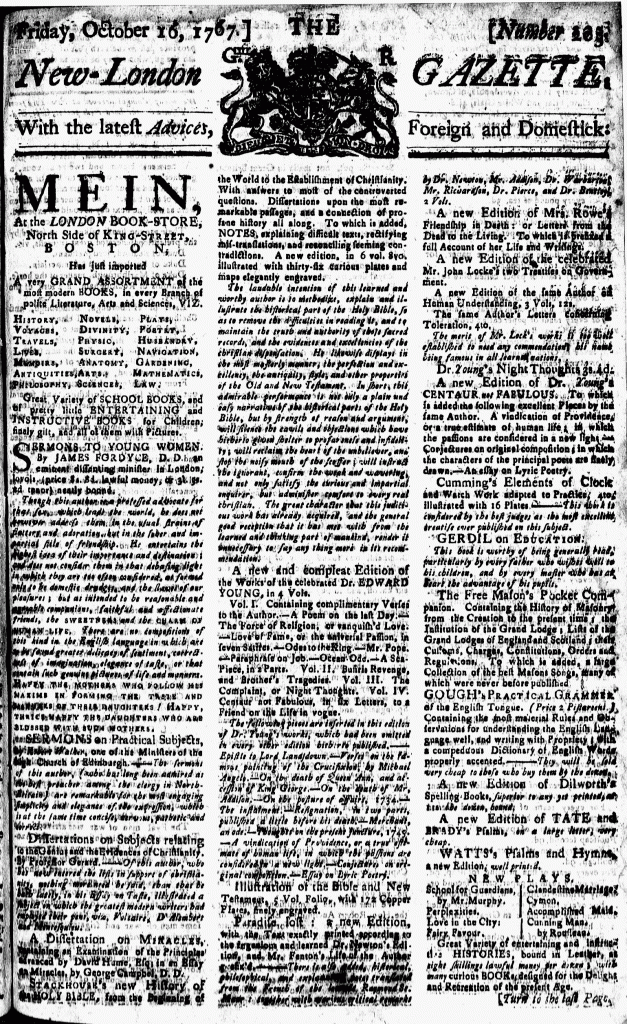What was advertised in a colonial American newspaper 250 years ago today?

“MEIN, At the LONDON BOOK-STORE, North Side of KING-STREET, BOSTON.”
The Adverts 250 Project previously featured an extraordinary advertisement that John Mein placed in the New-London Gazette in the fall of 1767. Not only did Mein, a Boston bookseller, advertise in a distant newspaper, his advertisement occupied nearly two entire pages. That was a bold and innovative marketing strategy.
It was not a one-time gimmick. Mein placed a similar advertisement in the October 16, 1767, edition of the New-London Gazette, an advertisement that was even more elaborate than the previous one. The new version extended over six columns, two entire pages (with the exception of the masthead on the first page). Mein’s advertisement accounted for half of that issue of the newspaper, limiting the amount of space for news items and prompting the printer to insert a notice that “Advertisements omitted will be in our next.”
This new advertisement had another feature that distinguished it from the previous version. It appeared on the first and fourth pages of the four-page newspaper (rather than the final two pages). This meant that it was both the first and last item readers encountered when they read that issue of the New-London Gazette. In addition, if a reader held the open newspaper aloft to read the second and third pages, observers would glimpse only the first and last pages. From their perspective it would appear that the New-London Gazette contained nothing except Mein’s advertisement. Similarly, a closed copy of the newspaper sitting on a desk or table assumed the appearance of a broadsheet book catalogue since no other advertisements or news items would have been visible.

These visual aspects that depend on the material qualities of the newspaper might be overlooked when working with a copy bound into a volume with other issues of the New-London Gazette, a common practice for preserving and archiving eighteenth-century newspapers. Deprived of the ability to exist as a separate issue but instead reduced to four consecutive pages in a larger book, the transformed newspaper does not immediately suggest all of the visual characteristics that early American readers would have experienced. The same could also be said of digitized versions of the advertisement, each page completely disembodied from the others. The greater significance of Mein’s advertisement becomes apparent only upon contemplating how the form in which the New-London Gazette was originally delivered to readers, not just the format the issue happens to occupy in the twenty-first century.
